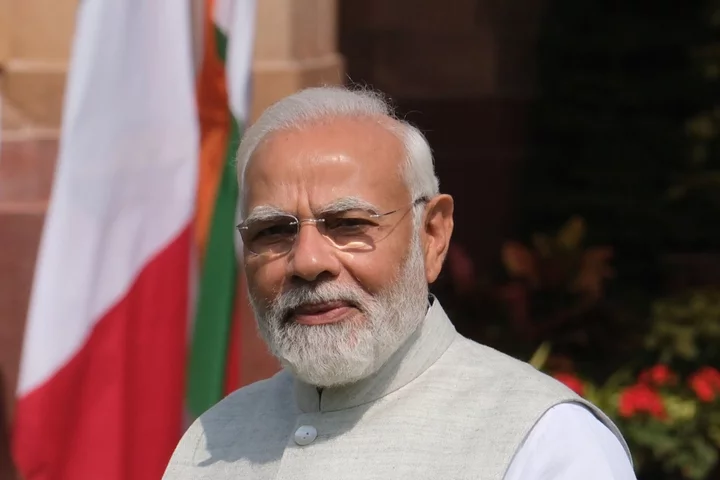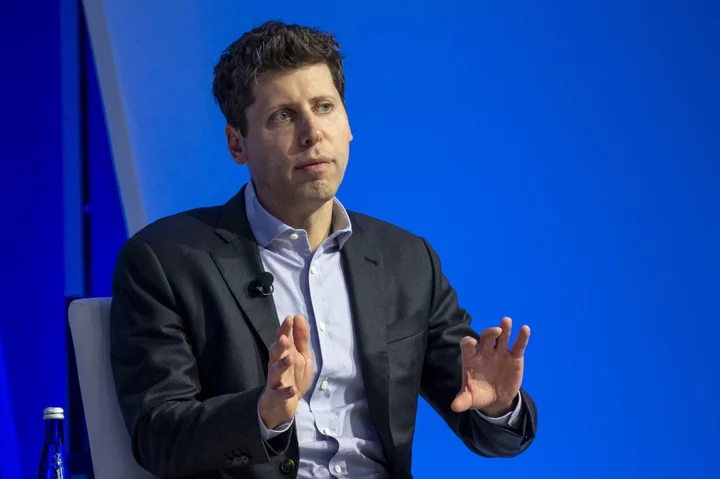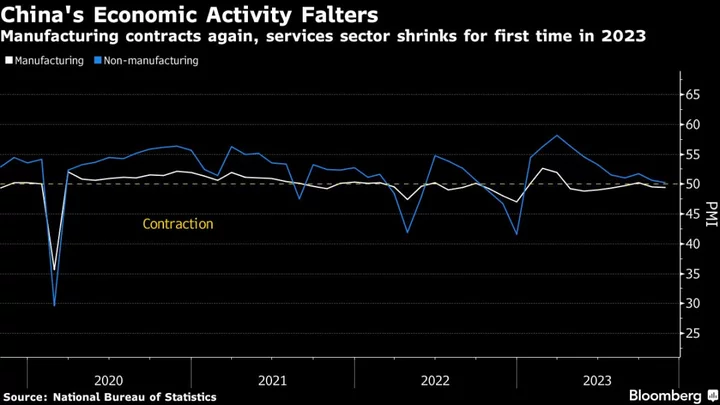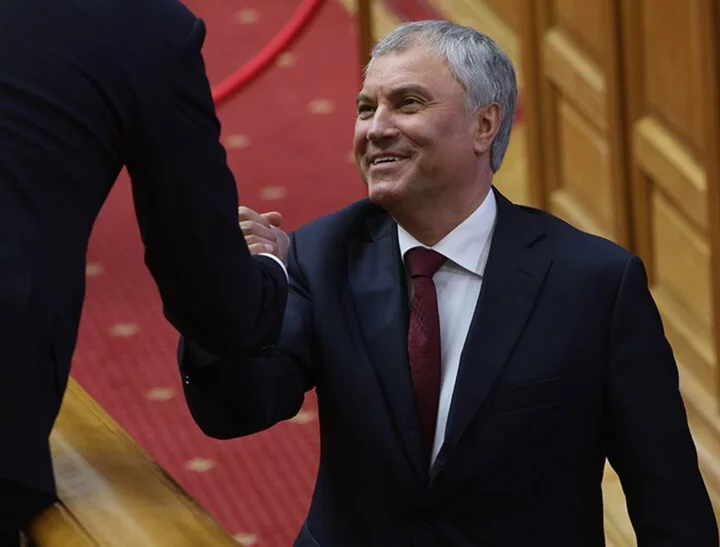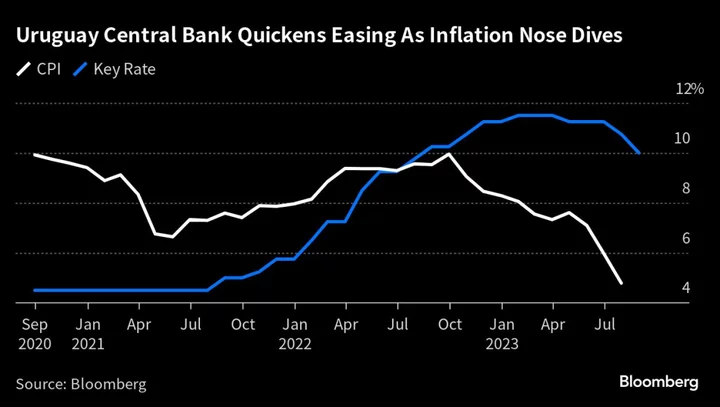Narendra Modi arrives in the US on his first official state visit with India’s geopolitical clout higher than at any point since he took power in 2014. He’ll be looking to leverage that to become an indispensable partner for American tech ambitions.
The trip will be a high-profile affair, complete with a banquet at the White House and an address to the US Congress, making Modi the first Indian prime minister to speak in front of the legislature twice. Besides meeting US President Joe Biden, he set to catch up with private-sector leaders including Tesla Inc.’s Elon Musk.
For Biden, India offers a diplomatic and military counterbalance to China’s power in the region, at a time when the US is distancing itself from its biggest trade partner and the world’s manufacturing powerhouse. Both nations see Beijing as a threat, with Biden expanding Trump-era export curbs to China and Modi’s government banning hundreds of Chinese apps in the wake of a border clash that left 20 Indian soldiers dead in 2020.
High on the agenda will be removing regulatory constraints to doing business, particularly in the tech space. As the Biden administration seeks to prevent China from obtaining advanced chips and other technology, the US and India are working on ways to promote semiconductor manufacturing in India, according to officials aware of details who asked not to be named since discussions were private.
On Tuesday, National Security Council spokesman John Kirby said there’s no “more consequential” partner than India when it comes to issues like artificial intelligence, quantum computing, resilient supply chains, clean energy, semiconductors and climate change.
“We know that India’s going to be a strategic partner for decades to come,” he said at a news conference.
Modi’s ambition for India to become a player in chip manufacturing looks far more credible today, after US imports of chips from the South Asian nation multiplied more than 38 times in the first quarter. Apple Inc. tripled iPhone production in India over the past fiscal year as it seeks to reduce its reliance on Beijing, while memory maker Micron Technology Inc., which is under investigation in China, is close to receiving government approval on a $1 billion semiconductor plant.
Read more: Apple India iPhone Output Soars to $7 Billion in China Shift
“India as a consumer of technology is now being replaced by an India which is at the table, wanting to frame the standards along with like-minded nations for the future of technology,” Rajeev Chandrasekhar, a minister who often speaks on behalf of the government’s tech policy team, told Bloomberg News in a recent interview.
The technological cooperation with the US is also spilling over to defense. General Electric Co. and Hindustan Aeronautics are set to sign an agreement during Modi’s visit to produce engines for India’s fighter jets. The two sides will have a flexible licensing agreement allowing for the transfer of technology.
“The US is quite choosy about whom it shares military technology with,” said Manjari Chatterjee Miller, a senior fellow at the US-based Council on Foreign Relations. “A deal allowing GE to produce jet engines in India — it will show how seriously the US is taking the partnership.”
US national and business leaders have heaped praise on India even while the government keeps sky-high import tariffs on a range of sectors. To bring more advanced manufacturing within its borders, India has combined these import duties on smartphones with subsidies designed to get assemblers like Hon Hai Precision Industry Co. and Wistron Corp. to set up shop locally.
It’s worked: Hon Hai plans a $700 million plant for iPhone parts and Samsung Electronics Co. is also looking to expand production.
Read more: Foxconn Commits to New Electronics Manufacturing in India
“India presents a unique crucible for technology — successes there are guaranteed to succeed anywhere else in the world,” Sanjay Gupta, the head of Google in India, said at an industry event.
Although India has had some early success with smartphone assembly, helping Apple export more than $7 billion of its devices from the South Asian nation in the last fiscal year, many components are still imported from China. While India’s $10 billion push to make chips is just beginning, questions remain about whether the nation can provide the uninterrupted power and water supply needed by companies that make the most-cutting edge chips, including Taiwan Semiconductor Manufacturing Co.
Modi’s trip comes at a pivotal time for India’s tech ecosystem, where a new digital law is being crafted in consultation — and sometimes in conflict — with big names like Google, Meta Platforms Inc. and Twitter. Draft legislation expected within weeks will help determine exactly how big an opportunity India presents to overseas players.
Even as Internet firms pour billions of dollars into the nation on the prospect that it’s a China-sized opportunity without the censorship deployed by the Communist Party, India is also among the top nations requesting content removal. Twitter Inc. has gone to court to fight blocking orders the company says suppress free speech, and organizations like the Electronic Frontier Foundation have called on India to reverse plans to undermine privacy-protecting encrypted communications.
Read more: US Looks Past India’s Rights Record as China Worries Deepen
In March, an Indian court upheld an antitrust fine on Alphabet Inc.’s Google over its dominance of mobile platforms. Far from being discouraged, Google is pouring more investment and energy into tailoring its Android software to India, including by expanding the local languages it supports.
Chandrasekhar said in the interview that India has the single-biggest bloc of users in the world with some 830 million people on the internet. That means companies must follow India’s rules if they want a piece of the market, he said, adding that the government doesn’t intend to have an “adversarial relationship” with anyone.
“Don’t be under any illusion that they’re here for any charitable purposes,” Chandrasekhar said about tech investors in India. “No other market this big.”
--With assistance from Saritha Rai.
(Updates with US quote)

